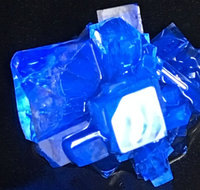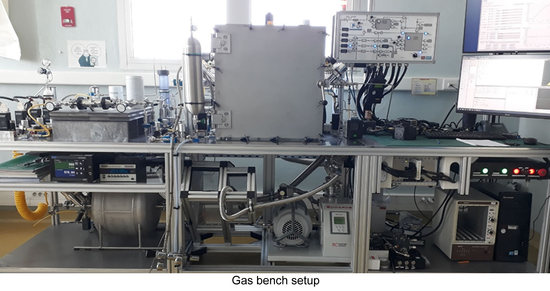Commissariat à l'Energie Atomique et aux Energies Alternatives (CEA)
Commissariat à l'Energie Atomique et aux Energies Alternatives (CEA)
|
The French Alternative Energies and Atomic Energy Commission (CEA) is a key player in research, development and innovation in four main areas: defence and security, low carbon energies (nuclear and renewable energies), technological research for industry, fundamental research in the physical sciences and life sciences. The CEA is established in nine centers spread throughout France. It works in partnership with many other research bodies, local authorities and universities. In 2018, CEA employ near 20 000 person including 1181 PhD and 170 postdoctorate with a total budget of 5.3 billion euro. CEA is a major institute in France involved in 427 European projects and is working with over 700 industrial partners. CEA is the first research institute depository of patent in France with 704 patents deposited in 2018 and over 6 700 family of active patents. The CEA is involved through 2 teams: the Laboratoire National Henri Becquerel (LNE-LNHB) and The Sensors and Electronic Architectures Laboratories (LCAE) are two laboratories of the CEA both in the same direction and in the same center of Paris-Saclay. Both laboratories are working on common institutional or industrial projects. |
|
Team 1: The Laboratoire National Henri Becquerel (LNE-LNHB)
LNHB is one of the national metrology institutes federated by the Laboratoire National de métrologie et d’Essais (LNE) since 2005, when the French government entrusted this body with the supervision of French metrology. In this capacity, the LNE delegated to the LNHB the role of National Metrology Laboratory in the field of ionizing radiation, a role it had already since 1970. Its activities: R&D to develop new standards and devices for radiation detection, maintenance of existing reference standards and international comparison, contribution to the quality and consistency of measurements at national level, education and transfer to users.
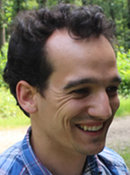 |
Benoit Sabot defended is master degree in Nuclear Physics and Ionization technology in 2012 in the University of Clermont-Ferrand. He obtained its PhD in physics 2015 specialized on radiation metrology. Its PhD leads to the construction of a new primary standard measurement system for the radioactive noble gas 220Rn which was also in the tasks of MetroNORM project. Since then he obtained a permanent position in 2016 at CEA/LNHB where he acquired new expertise in gamma spectrometry. Since the end of 2017, he is working on the development of TDCR devices and methods for liquid scintillation counting and on the development of new standards for low activity concentration of radioactive gas atmosphere. These studies involved him in the creation of a new laboratory facility to produce reference atmosphere of radioactive gases. This facility was recently presented at the ICRM 2019 conference (publication under review) and will be used in SPARTE project. These two subjects are currently supported by internal project of the French national metrology institute (LNE) and an EMPIR project MetroRADON. |
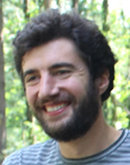 |
In 2007, Matias Rodrigues defended his PhD thesis 2005 on the development of an high energy resolution magnetic calorimeter for gamma spectrometry done in the French National Laboratory of Ionizing Radiation (the Laboratoire National Henri Becquerel, at CEA-Saclay). In 2008, he started a postdoctoral position at the Heidelberg University in Germany where he worked on the development of magnetic calorimeter for photon spectrometry. Later in 2008, he moved back to the CEA-Saclay for a permanent position, as researcher, for developing cryogenic detectors applied to the metrology of the activity. In addition, in 2011, he was appointed responsible of the primary technique for calibrating radioactive gas activity using compensated length triple counters. Since, he was and is involved in two ANR projects, and two European Metrology projects. Moreover, he is coordinator of several projects supported by the CEA. |
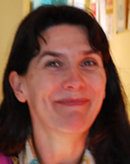 |
Sylvie Pierre began her career as a technician at the CNRS in a nuclear physics laboratory (IPNO). At the same time, she took CNAM (Conservatoire National des Arts et Métiers) courses which enabled her to obtain the diploma of metrology engineer. She got a permanent position in CEA in 2007 where she worked in alpha and gamma spectrometry. She started working in radon gas standards (222Rn and 220Rn) with Benoît Sabot in 2012 and she has been working on ever since. She was involved in the MetroNORM project and now in MetroRadon as leader in several tasks. She is now working with Benoit Sabot on the new laboratory facility for radioactive gases atsmophere production. |
|
|
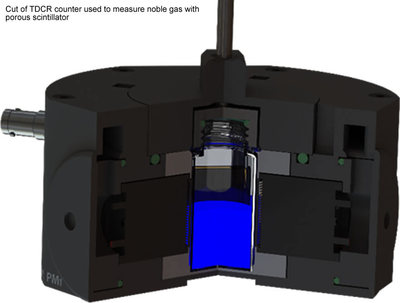 |
Team 2: Sensors and Electronic Architectures Laboratory (LCAE)
LCAE current staff is around 35 scientists and is aimed at providing key-enabling solutions forradiological detection. Three main divisions work in synergy: chemistry, electronic architecture and nuclear measurements. Starting from the idea to the prototype, the laboratory is proud to announce 5 industrial transfers to companies working in this field during the last decade.
Principal investigators
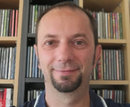 |
Matthieu Hamel defended in 2005 a PhD thesis on phosphoro-sulfurated platinum complexes as antitumor drugs. He started at the CEA a first postdoctoral position in 2006 where he met for the first time the chemistry of scintillators. In 2008, he moved back to bioorganic chemistry with the synthesis of antimalarial compounds at the University of Montpellier, France. In late 2009, he was granted a permanent position at the French Atomic Energy Commission, as a material chemist for the preparation and the characterization of fluorescent polymers for the detection of threats, mostly for Sarin surrogates and Nuclear and Radiological risks. Since 2013, he is in charge of the material chemistry division of the Sensors and Electronic Architectures Laboratory. His expertise falls in the design of plastic scintillators and their characterization and application. From this date, he has coordinated two ANR projects and several security projects supported by the French Ministry of Defense. He is also the coordinator since four years of a bilateral R&D collaboration with Nuvia Company, a global leader in nuclear instrumentation. He is the author or coauthor of 23 patents, 45 publications, 3 reviews, 1 book chapter and 24 proceedings. Google Scholar: 840 citations, H-index 16. |
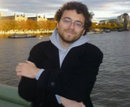 |
Guillaume Bertrand obtained his PhD in 2011, working on cobalt complex synthesis and their application as a semiconductor in photovoltaic devices. He then work on a series of post-doctorate fellowships: 2011-2012 thiophene based covalent organic frameworks (M.I.T, Boston, USA), 2013-2015 Heavy metal loading in plastic scintillators (C.E.A Saclay, Paris, France), 2015-2016 Shape control of CdSe nano-platelets (I.I.T, Genova, Italy). In December 2016 He was granted a permanent position at CEA Saclay in the LCAE (Laboratory Sensors and Electronic architecture), as a lead scientist in the chemistry group. His area of expertise cover chemical design of scintillating materials, luminescent MOF and COF synthesis, photophysic of plastic scintillators, and sensors for dismantling application. To this day he is the coordinator an ANR funding and several project on dismantling. His worked yield to 37 publications in author or co-author and 6 patents. Google scholar: 620 citations, H-index: 11. |




